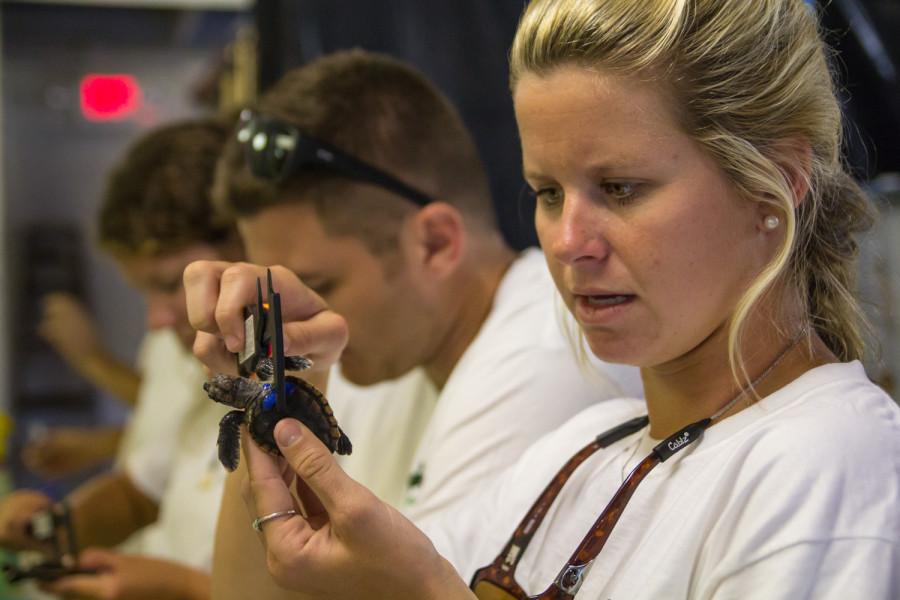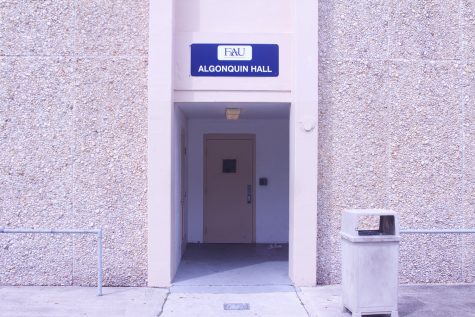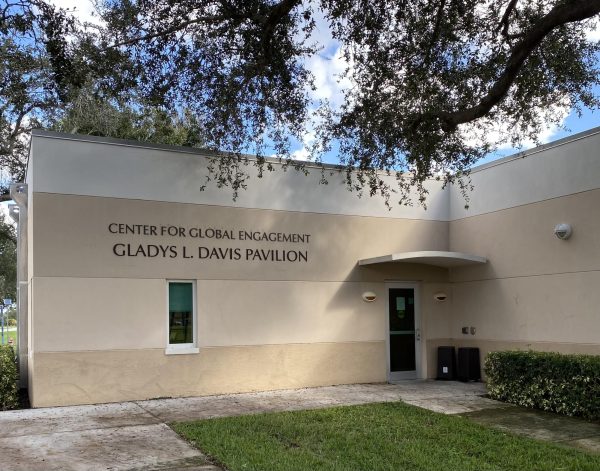Sea Turtles in Trouble
Florida is the hotspot for loggerhead and leatherback sea turtles, but this could change because of increase in sea level.
Tiny sea turtles can be seen flapping their flippers in a large saltwater tank,their heads bobbing up and down in the water as they continue to move even in their sleep: swimming, swimming and more swimming.
This is a typical day for leatherback sea turtles at the FAU Marine Research Lab.
For these turtles, the water in the lab is comparable to an open ocean, because they can’t see the walls.
To deal with this issue, the turtles can be seen wearing a harness that is tethered to the tank; the turtles can flap as freely as they wish, and will not get injured in the process.

From the beginning of March to the end of October is sea turtle nesting season. Last year was a record high for nesting, but while this is a rebound, environmental factors are threatening nesting for the leatherbacks.
Turtles must come to the beach to lay their eggs: Turtle eggs require oxygen that comes from the sand dunes they lay their nests in, making it impossible for sea turtles to lay eggs in water.
Sea level rises cause flooding where the turtles’ nests are, and this can wash away the eggs or prevent the embryo from getting oxygen.
Jeanette Wyneken, a scientist at the FAU Marine Research Lab at the Gumbo Limbo Nature Center, has been studying the effects of sea level rise and water temperature on leatherbacks.
The interior of Wyneken’s office has turtles of all types scattered around. On her wall specifically is a photo of her scuba diving with a turtle wearing one of her tracking devices.
Wyneken herself was wearing a Save the Seas Foundation shirt and turtle earrings.
As a child, Wyneken had pet turtles she was able to raise until adulthood. Those turtles eventually laid eggs.
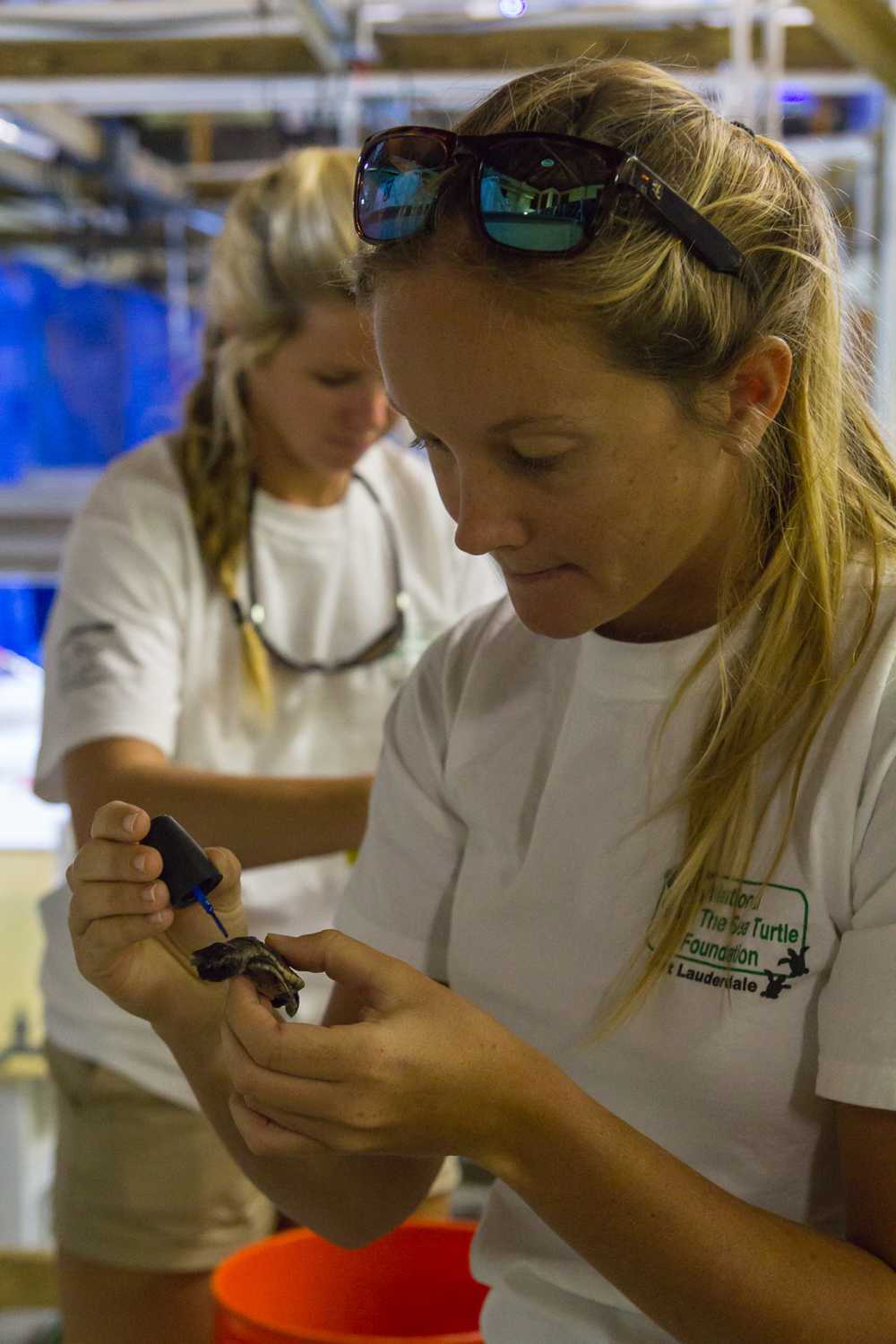
Her research on sea turtles happened accidentally, according to her.
She attempted two projects in graduate school. Both unfortunately didn’t work out.
One of them involved a species known as the mudskipper fish, which is unique in that the fish do not swim well; they are prone to drowning, and can climb trees.
Her research with these fish ended when her colony was killed by fumes caused by her university’s remodeling.
She needed another proposal quick, so she went back to something she know a lot about – turtles.
“There was the least amount of information on sea turtles, so I quickly wrote grant proposals, got money, and got it started. It has obviously been a good fit, because I’ve been working with them for 31-32 years,” she said.
Wyneken’s own research also demonstrated another effect that increasing global temperatures have on these turtles – it allows for an easier method of determining their sex.
This research investigated sex ratios for sea turtles. For turtles, sex is determined by environmental factors like temperature: Hotter temperatures produce females, but cooler temperatures lead to males.
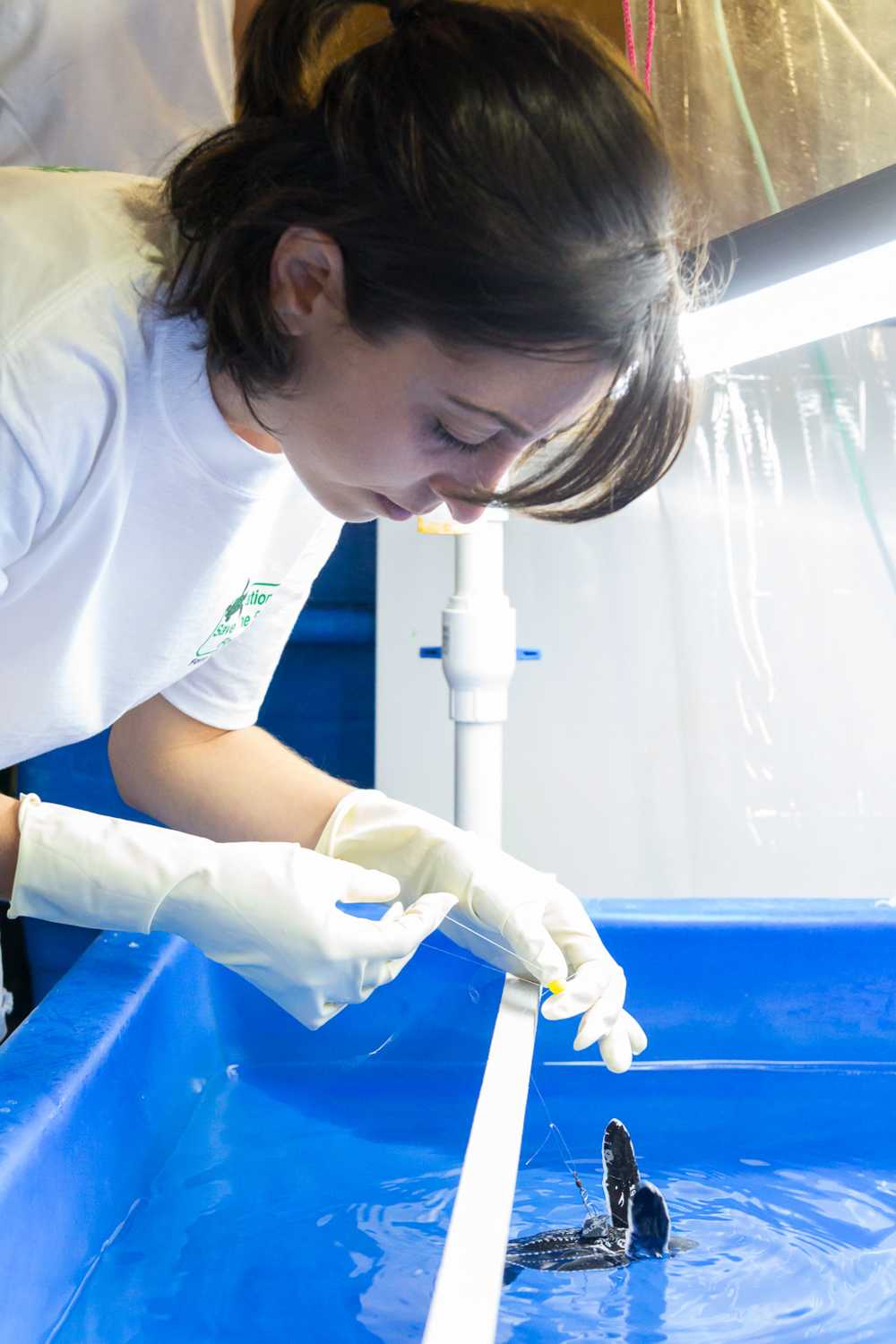
Prior to this research, the only way to determine the sex of sea turtles was through dissection, Wyneken said in a PBS article.
Another factor is that sex could only be determined after a sea turtle reached puberty, which can take 15-25 years, depending on the species.
“That’s too long of a time to wait. Especially if there is a problem from environmental change, you want to know as soon as possible,” Wyneken said.
She and her team developed a different way to identify sex, involving laparoscopy.
This procedure involves making a small incision on the turtle, and inserting a small camera to view the sex organs.
Wyneken emphasized that the turtles don’t seem to notice the process, and are more annoyed at not being fed a day in advance of the procedure.
The procedure is 100 percent accurate and is done in the early stages of the turtles’ lives, when they are about the size of the palm of your hand, she said.
Besides this new procedure, another special feature about this research, according to Wyneken, is that FAU is currently the only place in the world that can raise leatherback sea turtles.
Wyneken added once the sea turtles are the size of her palm, they can return to the ocean. They are given a free ride offshore through Jim Abernathy’s Scuba Adventures, a scuba organization.
Abernathy has helped the science lab for 11-12 years, by taking the turtles to where they need to go by boat.
With increasing global temperatures, there was a shift toward more female sea turtles than males in her research. She said in a PBS article, “In 2010, we did not see a single male.”
Sea turtle species like the loggerhead will have one hatchling survive out of 7,000 eggs, because some eggs don’t hatch, and the potential for predation.
These factors make it harder to replace the lack of males in the population.
“It turns out you need half a generation of data, per beach. Each year we’re still sampling,” Wyneken said.
To get information that would be accurate for not only the local and state level, but at the national level, it required getting samples of many nests on different beaches for a number of years.
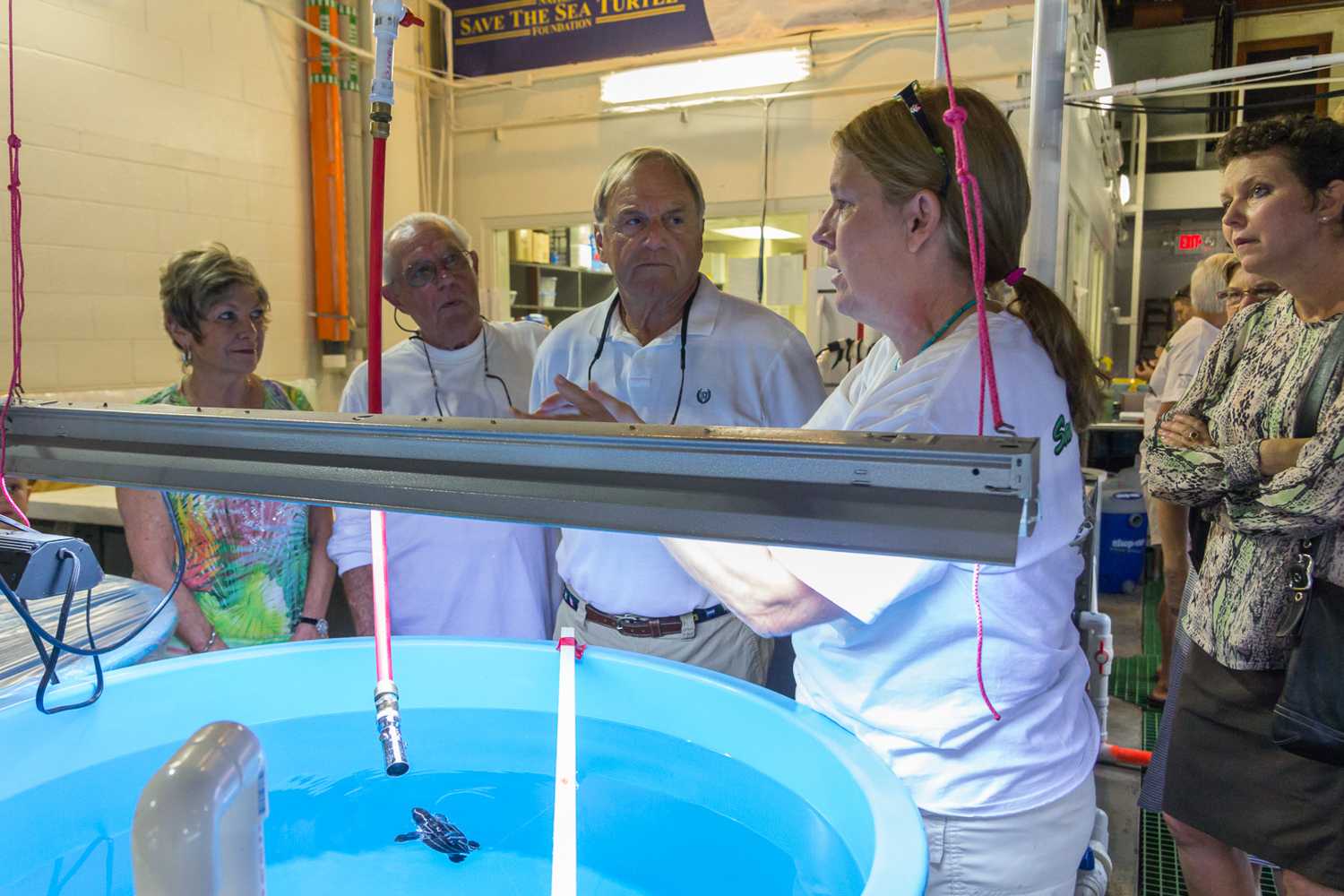
Wyneken specified that since the turtles are still needed for sampling, they are a part of the FAU Research Gallery at Gumbo Limbo Center, where visitors can walk in and view the sea turtle hatchlings in the summer and fall.
Wyneken mentioned when talking about Gumbo Limbo that, “Because of the nature center’s field trips, it’s hard to find a student coming to Boca Raton’s high schools [that don’t know] about environmental sex determination.”
When asked why students should care about sea level rise, Wyneken quickly said, “We should care because we live on a peninsula,” with a laugh.
She then said, “It doesn’t take much to have an effect. People in Miami already experienced this sea level rise during the supermoon. The streets that were flooding were not due to water washing ashore or from waves. It was because the oceans are just a little higher and deeper than they used to be.”
She also voiced a concern: “Lots of universities in the U.S. are 100-200 years old, so it’s kind of alarming to think that your campus might be awash. So that’s definitely a reason to care.”
Right here in Palm Beach County is the hotspot in the United States for leatherback nesting. When you’re part of a community, you have to appreciate the diversity in the community, and diversity doesn’t just mean people: it also means the birds, turtles, insects and plants.
Students here at Florida — Atlantic — University, we’ve got an ocean in our name so I think we have an extra special responsibility to recognize the importance of the oceans and the creatures in them, she said.
To find out more about leatherback sea turtles and storm surges, click here.


